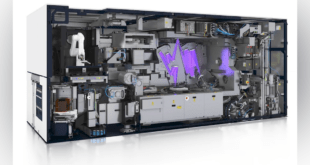In the vast realm of scientific exploration, the unseen often holds the key to groundbreaking discoveries. Nanoscale imaging techniques have revolutionized our ability to visualize and understand the intricate world that exists at the nanoscale. From studying the structure and behavior of nanomaterials to unraveling the mysteries of biological systems, nanoscale imaging has become an indispensable tool across various scientific disciplines. In this article, we embark on a journey to explore the fascinating world of nanoscale imaging techniques, uncovering their principles, strengths, and limitations.
Unveiling the Nanoscale World:
Nanoscale imaging techniques allow scientists to visualize objects and structures that are just a few nanometers in size. This is equivalent to a few billionths of a meter, or about 100 times smaller than the width of a human hair. By magnifying the nanoscale realm, scientists can uncover intricate details and gain insights into the underlying mechanisms of various phenomena.
Principles of Nanoscale Imaging:
Imaging at the nanoscale requires the use of specialized techniques that can overcome the limitations imposed by the diffraction limit of light. These techniques are based on different principles and utilize various interactions between the sample and the imaging probe or beam. Let’s explore some of the key principles employed in nanoscale imaging:
- Interactions with Electrons: Electron-based imaging techniques, such as transmission electron microscopy (TEM) and scanning electron microscopy (SEM), use beams of electrons instead of photons to visualize samples. These techniques provide higher resolution imaging by taking advantage of the shorter wavelengths of electrons compared to visible light.
- Scanning Probe Interactions: Scanning probe microscopy (SPM) techniques, including atomic force microscopy (AFM) and scanning tunneling microscopy (STM), rely on the interaction between a sharp probe and the sample surface. These techniques provide nanoscale resolution by measuring forces or currents between the probe and the sample.
- Super-Resolution Techniques: Super-resolution microscopy techniques go beyond the diffraction limit of light by utilizing advanced optical principles. They exploit the properties of fluorescent molecules or their switching behavior to achieve higher resolution imaging, enabling visualization of structures at the nanoscale.
- Spectroscopic Interactions: Spectroscopic imaging techniques combine imaging with spectroscopy to gain information about the chemical composition, molecular interactions, and electronic properties of nanoscale structures. These techniques utilize interactions between the sample and specific wavelengths or energies of light or particles to obtain detailed chemical and structural information.
- Correlative Imaging: Correlative imaging combines multiple imaging techniques to obtain a comprehensive view of the sample. It bridges the gap between different length scales, combining the advantages of each technique to provide a more complete understanding of the sample’s structure and properties.
For an in-depth understanding on Nanoscale Imaging technology and applications please visit: Nanoscale Imaging: Unveiling the Invisible World
Benefits of Nanoscale Imaging:
Nanoscale imaging techniques offer a multitude of benefits that have significantly advanced scientific research and technological innovation. Firstly, these techniques enable us to visualize and examine objects and structures that are simply too small to be observed with the naked eye or conventional microscopes. By magnifying the nanoscale realm, scientists can uncover intricate details and gain insights into the underlying mechanisms of various phenomena.
Secondly, nanoscale imaging techniques provide invaluable information about the structure and composition of materials at the nanoscale level. With high-resolution imaging capabilities, researchers can precisely analyze the arrangement of atoms, crystals, and molecules within a material. This knowledge is crucial for understanding the fundamental properties and behaviors of nanomaterials, such as their mechanical, electrical, and optical characteristics.
Furthermore, nanoscale imaging techniques facilitate the study of material behavior at the nanoscale, offering a deeper understanding of their unique properties. By visualizing and tracking the dynamics and interactions of nanoparticles, nanoscale imaging enables researchers to observe phenomena such as self-assembly, phase transitions, and surface reactions. This knowledge is crucial for developing advanced materials with enhanced functionalities, such as improved energy storage systems or more efficient catalysts.
Lastly, nanoscale imaging techniques play a pivotal role in the development of new materials and devices with extraordinary properties. By accurately characterizing and manipulating materials at the nanoscale, researchers can design and engineer materials with tailored properties, such as increased strength, conductivity, or optical activity. This ability opens up possibilities for creating innovative technologies in fields like electronics, photonics, medicine, and energy storage.
Challenges and Future Directions:
While nanoscale imaging techniques offer tremendous benefits, they also come with certain challenges that researchers must navigate. One of the primary challenges is the cost and time required to perform these imaging techniques. The equipment and instruments used for nanoscale imaging are often expensive to acquire and maintain, making them accessible to a limited number of research facilities. Additionally, the imaging process itself can be time-consuming, especially when capturing high-resolution images or conducting multiple scans for comprehensive analysis.
Another challenge is the potential for sample damage during the imaging process. Many nanoscale imaging techniques involve the use of intense beams or probes that can physically interact with the sample. Careful sample preparation and imaging parameters are essential to minimize these effects and preserve the integrity of the sample.
Interpreting nanoscale images can also be a complex task. The high-resolution nature of these images often results in intricate and detailed information, requiring advanced analysis techniques and expertise. Researchers need to possess a deep understanding of the imaging technique and the underlying principles involved to accurately interpret the obtained images.
Additionally, artifacts and noise in the images can complicate the interpretation process. Distinguishing true features from artifacts requires careful examination and validation to ensure accurate and meaningful results.
To address these challenges, ongoing advancements in nanoscale imaging techniques focus on improving accessibility, minimizing sample damage, and enhancing image analysis capabilities. Efforts are being made to develop more cost-effective imaging systems, optimize imaging protocols to reduce sample perturbation, and provide user-friendly software tools for image processing and analysis. Collaborative efforts between experts from various disciplines help to overcome these challenges and ensure accurate interpretation of nanoscale images.
Recent Breakthrough
The researchers at Brown University have developed a groundbreaking approach to scattering-type scanning near-field microscopy (s-SNOM) that utilizes blue light to measure electrons in semiconductors and other nanoscale materials. This achievement is significant as it overcomes a long-standing challenge that has limited the study of crucial phenomena in various materials, potentially leading to the development of more energy-efficient semiconductors and electronics.
In s-SNOM, an optical source with a long wavelength is coupled to a near-field tip, which is used to scatter light from the sample material being imaged. The scattered radiation contains information about the nanoscale region directly beneath the tip, allowing researchers to extract material-specific information. However, the challenge arises when working with wide bandgap materials like silicon and gallium nitride, as coupling shorter wavelengths, such as blue light, to the nanotip has been difficult, hindering nanoscale studies.
The researchers at Brown University successfully addressed this challenge by using blue light to obtain measurements from a silicon sample that were not achievable with red light. This breakthrough demonstrated the feasibility of using shorter wavelengths for nanoscale material analysis. By illuminating the sample with blue light, the researchers not only enabled light scattering but also produced a burst of terahertz radiation from the sample. This terahertz radiation carries valuable information about the sample’s electrical properties.
While the use of blue light and terahertz radiation adds an extra step to the process and increases the amount of data to analyze, it eliminates the need for extreme precision in aligning the tip over the sample. The longer wavelength of terahertz radiation allows for easier alignment, although it still requires close proximity to the sample. The researchers plan to leverage this technique to gain deeper insights into semiconductors used in blue LED technology, which could potentially lead to advancements in the field.
The significance of this research lies in the ability to overcome the limitations of studying nanoscale phenomena in wide bandgap materials. By utilizing blue light and terahertz radiation, researchers can explore the electrical properties and behavior of materials at the nanoscale with greater precision and efficiency. This breakthrough not only expands our understanding of nanoscale materials but also opens up new possibilities for the development of more energy-efficient semiconductors, electronics, and other nanoscale technologies.
Overall, the novel technique developed by the Brown University researchers paves the way for further advancements in nanoscale imaging and its applications. It offers a valuable tool for scientists and engineers to explore and manipulate nanoscale materials, contributing to the advancement of various technological fields and enabling the development of more efficient and advanced devices.
Conclusion:
Nanoscale imaging techniques have ushered in a new era of scientific exploration, allowing us to uncover the mysteries of the unseen world. From the precise imaging of nanomaterials to the visualization of intricate biological structures, these techniques have become indispensable in various scientific disciplines. As technology continues to advance, the resolution, speed, and versatility of nanoscale imaging will continue to improve, opening up new frontiers in scientific discovery. By unraveling the secrets hidden at the nanoscale, we pave the way for innovative applications and transformative breakthroughs that will shape the future of science and technology.
References and Resources also include:
https://www.photonics.com/Articles/Blue_Light_Technique_Will_Advance_Nanoscale_Tech/a68946
 International Defense Security & Technology Your trusted Source for News, Research and Analysis
International Defense Security & Technology Your trusted Source for News, Research and Analysis

